Overview
This article explores ten essential applications of the 2.0 ml tube in pharmaceutical laboratories, emphasizing its remarkable versatility in specimen storage, preparation, and a range of laboratory applications. Each application is illustrated with specific examples, such as its critical role in:
- PCR
- Diagnostic testing
- Environmental sampling
These instances demonstrate how the tube's design and properties not only ensure sample integrity but also enhance overall laboratory efficiency. By understanding these uses, professionals can appreciate the significance of high-quality scientific instruments in advancing laboratory practices.
Introduction
In the realm of laboratory science, the 2.0 ml tube emerges as an indispensable tool, offering remarkable versatility for a myriad of applications, from sample storage to diagnostic testing. Its compact design and high-quality construction ensure that biological and chemical samples remain uncontaminated and intact—an essential factor for accurate analysis and research outcomes.
As laboratories increasingly depend on these tubes for processes such as:
- PCR amplification
- Environmental testing
the importance of maintaining sample integrity and enhancing experimental efficiency cannot be overstated. This article explores the extensive uses of the 2.0 ml tube, underscoring its significance across various scientific disciplines and its pivotal role in advancing laboratory practices.
JM Science 2.0 ml Tube: Versatile Sample Storage
The 2.0 ml tube serves as a fundamental asset in pharmaceutical laboratories, providing a reliable solution for the preservation of a wide range of materials, including biological fluids, reagents, and chemical solutions. Its compact size optimizes space utilization within storage units, while its design minimizes the risk of contamination.
Typically crafted from high-grade polypropylene, these containers are resistant to various chemicals, making them suitable for diverse laboratory applications. Additionally, the transparent material allows for easy visibility of the contents, facilitating quick assessments of specimen status.
In drug testing contexts, these 2.0 ml tubes prove especially advantageous for specimen storage and preparation in conjunction with Karl Fischer titrators, ensuring compliance with the Japanese Pharmacopoeia.
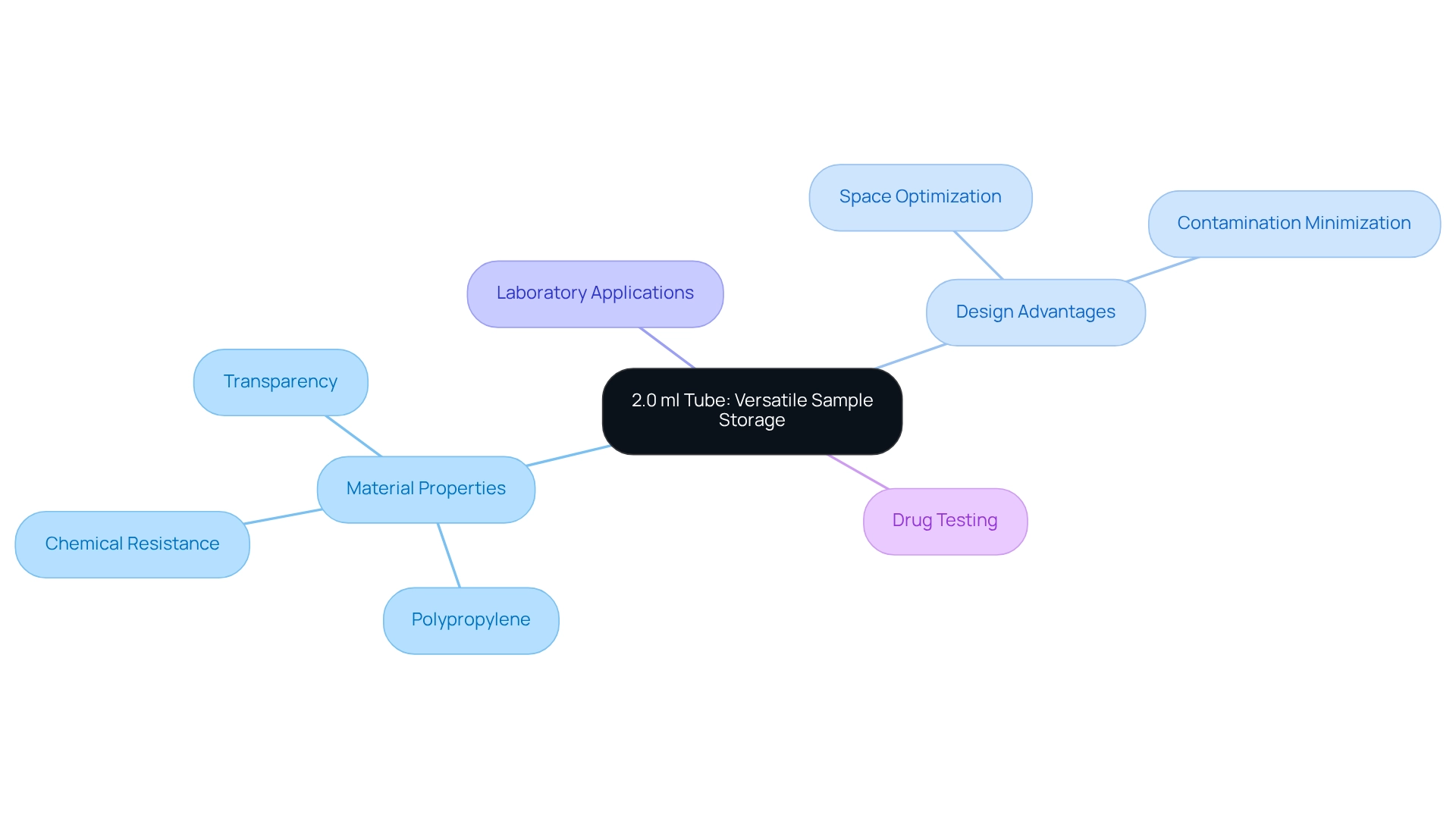
PCR Applications: Utilizing the 2.0 ml Tube for Amplification
In the realm of PCR (Polymerase Chain Reaction) applications, the 2.0 ml tube is an essential tool for preparing and amplifying DNA samples. Its design is meticulously crafted to accommodate the thermal cycling process, a critical step for denaturing DNA and facilitating primer annealing. The capacity of this 2.0 ml tube is perfectly suited for housing the necessary reagents, including:
- DNA templates
- Primers
- Polymerase
Furthermore, its compatibility with various thermal cyclers ensures reliable performance throughout the amplification process. It is imperative to properly seal these vessels to prevent evaporation and contamination, as even minor lapses can significantly compromise experimental results.

Sample Transport: Ensuring Integrity with the 2.0 ml Tube
The 2.0 ml tube is essential for preserving the integrity of specimens during transport. Its secure sealing mechanism effectively prevents leaks and contamination, which is essential for sensitive biological specimens. J. M. Williams emphasizes that accurate on-site measurements of hydrogen sulfide (H2S) and carbon dioxide (CO2) are crucial for effective corrosion management, indirectly highlighting the importance of reliable containment during the transport of specimens.
Studies reveal that improper transport can lead to contamination rates exceeding 30%, underscoring the necessity for dependable containment. These tubes, specifically the 2.0 ml tube, are engineered to withstand various environmental conditions, making them ideal for both short and long-distance shipping. To further ensure safety and traceability, laboratories frequently adopt specific labeling and packaging protocols. For instance, employing color-coded labels can assist in distinguishing specimen types and their respective handling requirements.
Optimal methods for transporting biological specimens involve ensuring that they are adequately sealed and labeled, significantly reducing the risk of degradation. Practical examples demonstrate that adherence to these best practices markedly decreases the risk of material degradation.
Recent discussions among specialists underscore the significance of sealing methods in the transportation of specimens. Effective sealing not only protects against external contaminants but also preserves the specimen's original condition, which is vital for precise analysis. By implementing these strategies, laboratories can enhance the reliability of their transport processes, ensuring that critical biological specimens arrive intact and ready for analysis.
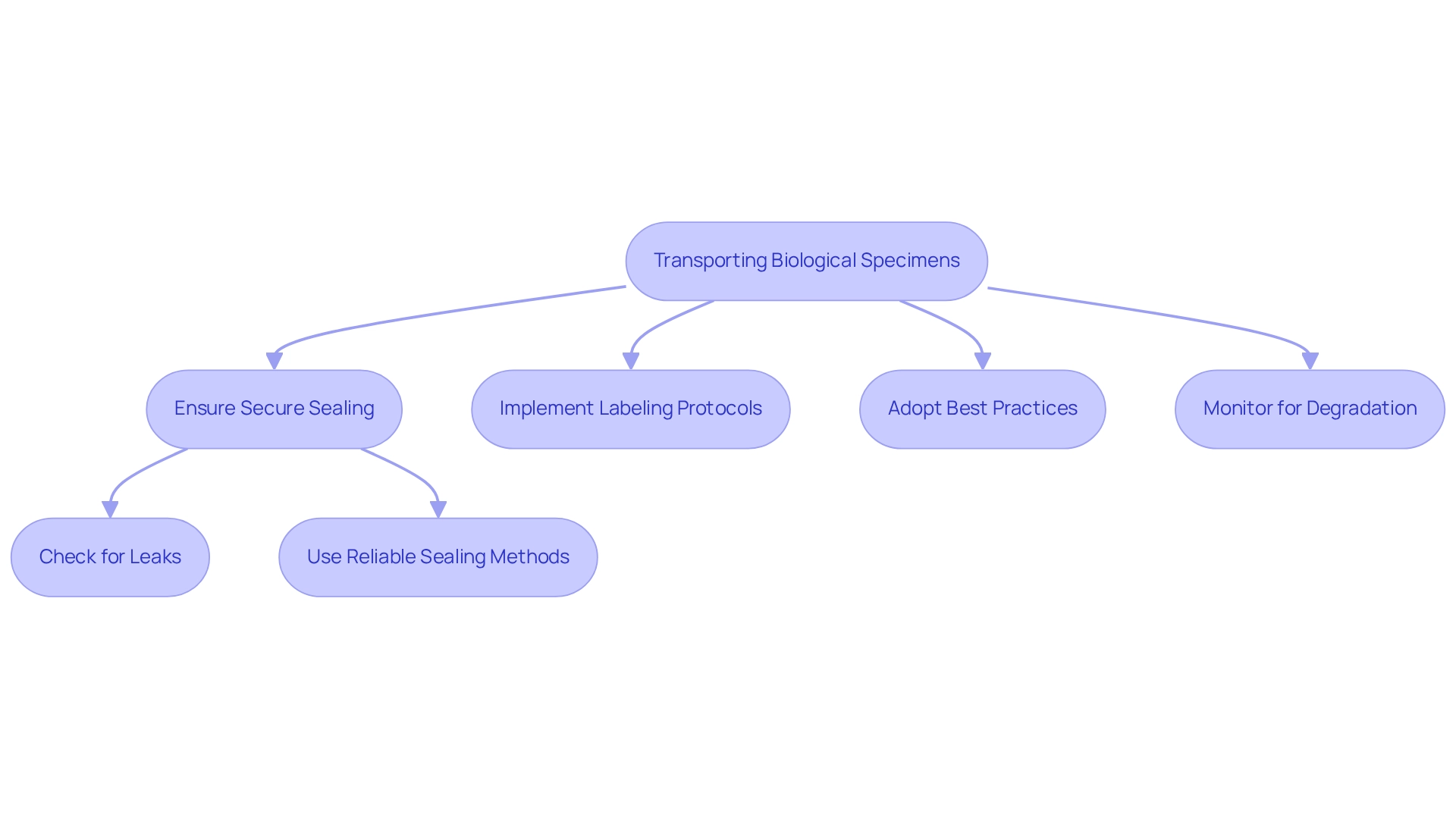
Biological Sample Storage: Long-Term Solutions with the 2.0 ml Tube
The 2.0 ml tube is an essential tool for the long-term preservation of biological materials, including blood, serum, and tissue specimens. These containers are versatile, capable of being stored at various temperatures, including ultra-low conditions, without compromising the integrity of the specimens.
Constructed from polypropylene, they are engineered to endure freezing and thawing cycles, making them ideal for cryopreservation. It is imperative to ensure proper labeling and organization of stored samples within these containers, as this practice is vital for maintaining sample integrity and facilitating easy retrieval when necessary.
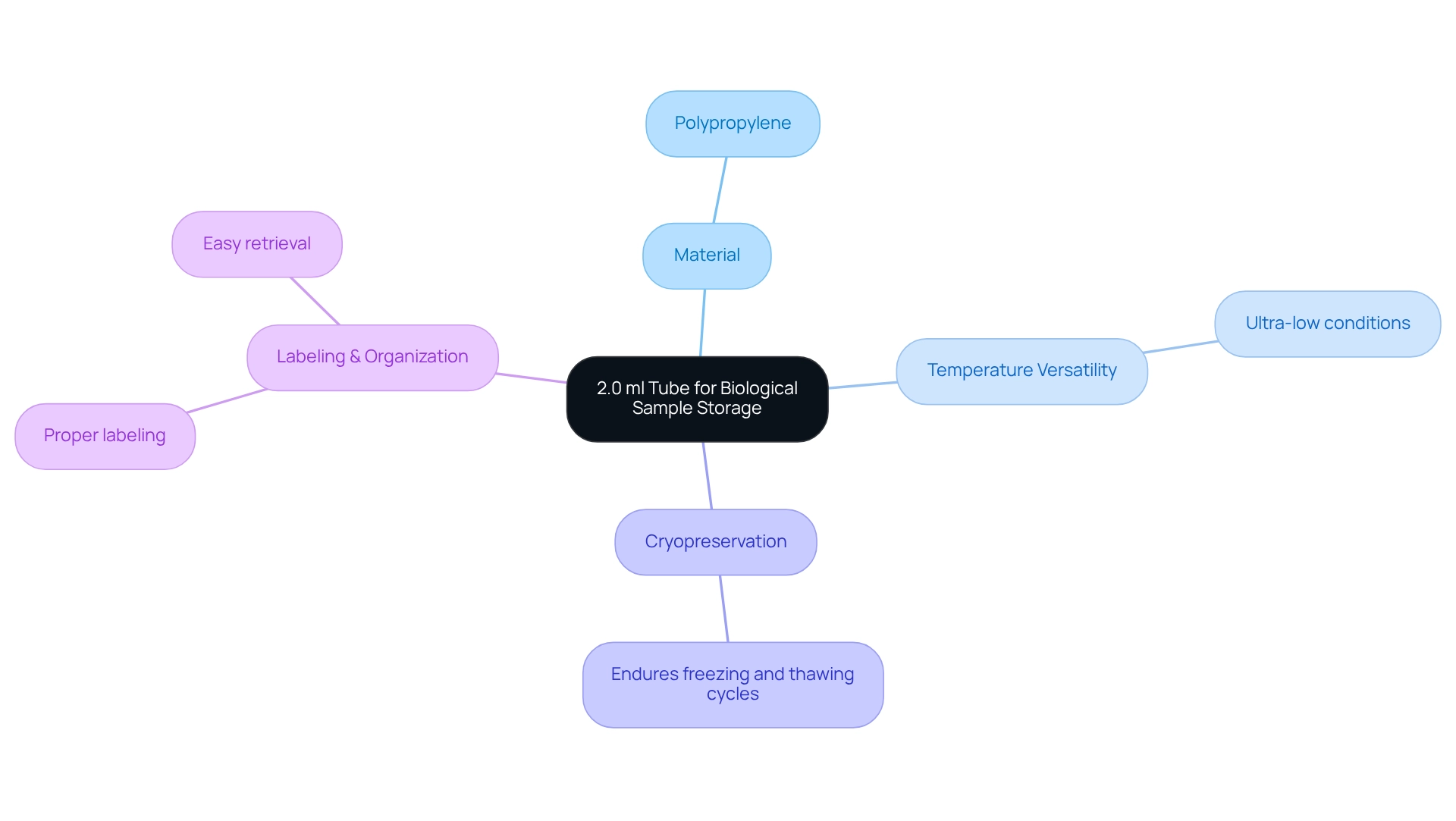
Chemical Reactions: Facilitating Experiments with the 2.0 ml Tube
In chemical experiments, the 2.0 ml tube serves as a reliable container for conducting reactions. Its thoughtful design facilitates easy mixing of reagents, while the clear material allows for visual monitoring of reaction progress. The capacity of this 2.0 ml tube is particularly suitable for small-scale reactions, making it a preferred choice for preliminary experiments. Moreover, the vessel's compatibility with vortex mixers and centrifuges enhances its adaptability across various laboratory environments, underscoring its essential role in scientific research.
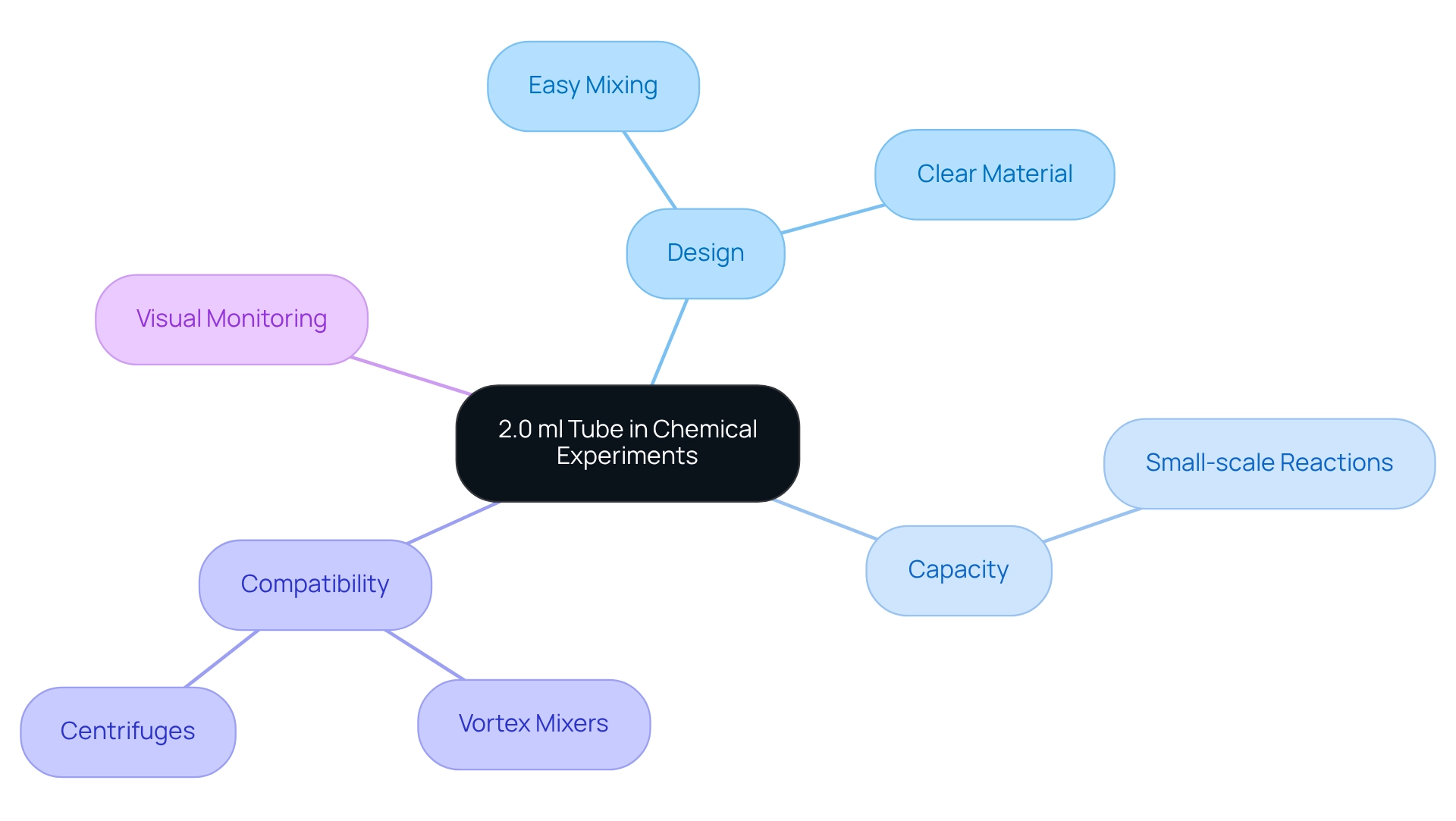
HPLC Applications: Enhancing Analysis with the 2.0 ml Tube
The 2.0 ml tube stands as a cornerstone in HPLC applications, serving both the preparation and storage of specimens. Its innovative design facilitates the efficient loading of materials into HPLC systems, which is crucial for ensuring precise and consistent results. This 2.0 ml tube has a capacity ideally suited for concentrated substances, allowing for easy dilution as needed for thorough analysis. Moreover, its compatibility with various HPLC autosamplers not only enables automated injection but also significantly enhances workflow efficiency in analytical environments.
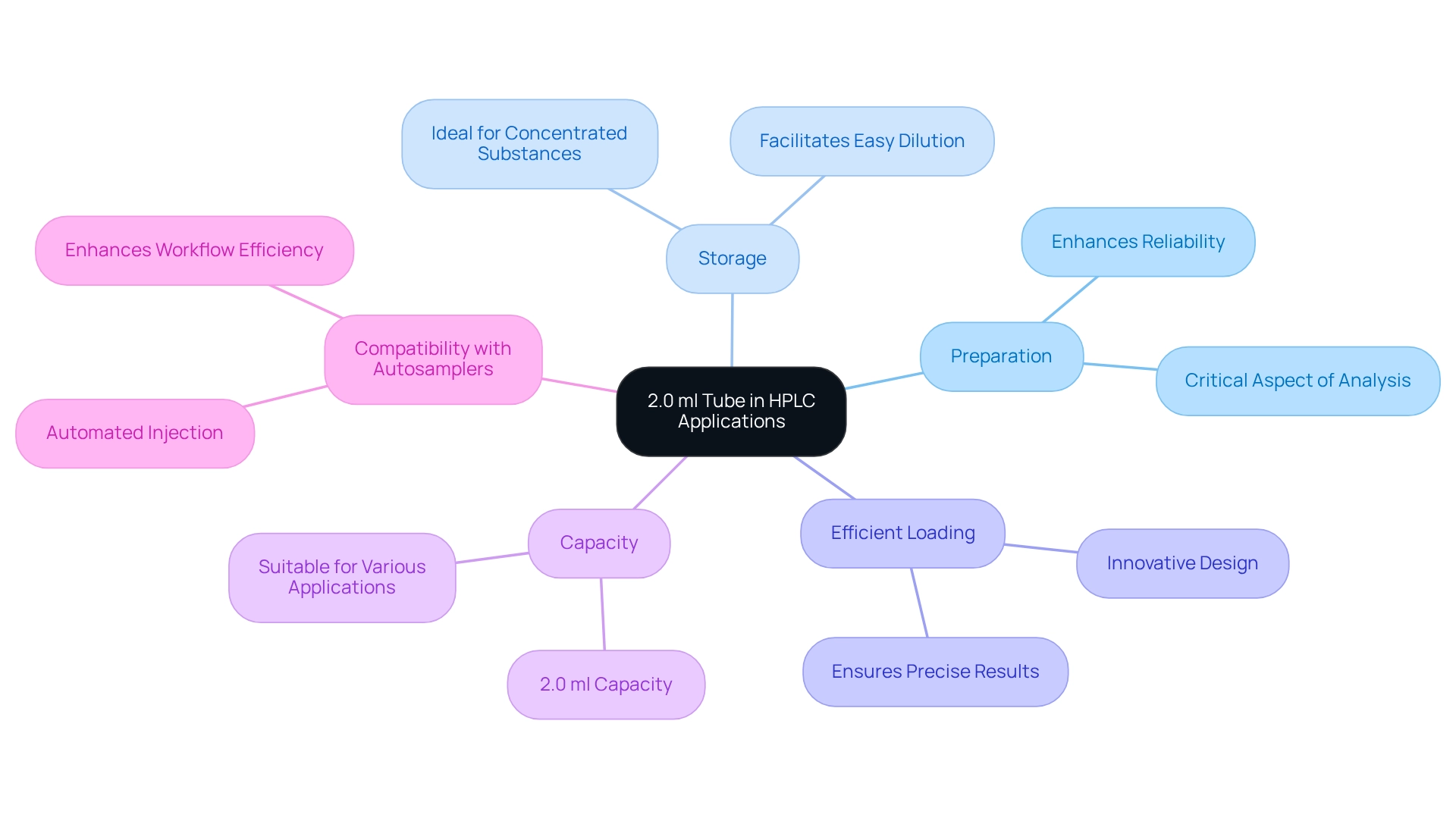
Sample Preparation: Streamlining Processes with the 2.0 ml Tube
The 2.0 ml tube is indispensable for optimizing specimen preparation in research facilities. With its graduated markings, it allows for precise liquid measurements, which are critical for accurate aliquoting of reagents and specimens. This innovative design not only facilitates efficient mixing and vortexing but also guarantees the creation of homogeneous solutions.
By integrating these containers into their workflows, laboratories can significantly enhance efficiency and minimize errors during specimen preparation, ultimately leading to more reliable experimental outcomes. To maximize the benefits of the 2.0 ml tube, pharmaceutical lab managers should consider implementing a standardized procedure for its use, ensuring consistency and precision across all preparations.
This strategic approach aligns with JM Science's commitment to continuously advancing its product offerings, thereby contributing to significant improvements in research and healthcare.
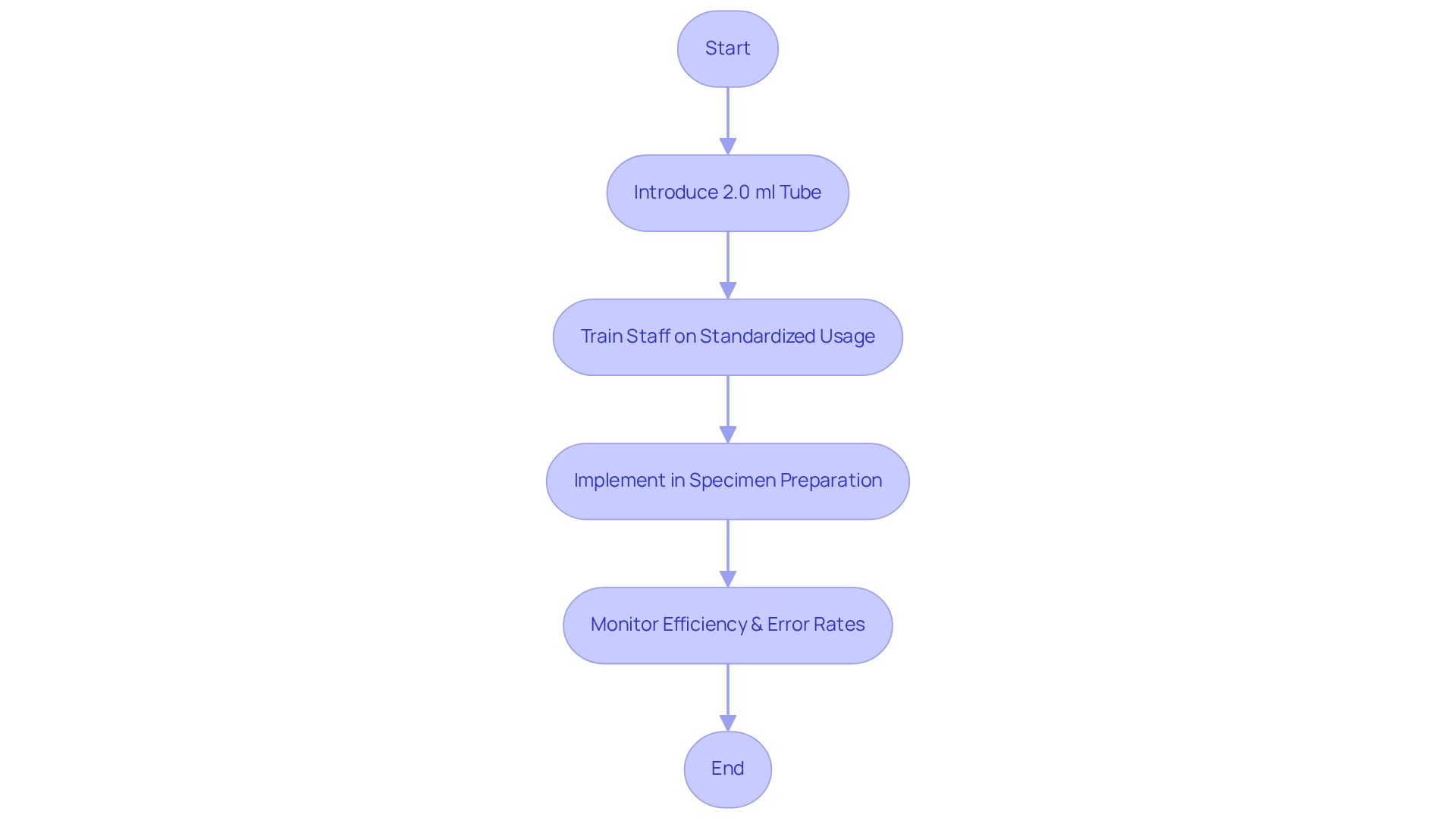
Diagnostic Testing: Utilizing the 2.0 ml Tube for Accurate Results
In diagnostic testing, the collection and preservation of specimens such as blood, saliva, and urine rely heavily on the 2.0 ml tube. Its secure sealing mechanism effectively prevents contamination, thereby safeguarding the integrity of specimens during transport to testing facilities. This is of paramount importance, as studies indicate that sample integrity directly impacts diagnostic accuracy, with improper handling resulting in erroneous results in up to 30% of cases.
Furthermore, the compatibility of 2.0 ml tubes with various analytical instruments facilitates their seamless integration into diagnostic workflows, promoting efficient processing and analysis. By leveraging these instruments, laboratories can significantly enhance the precision of their test results, ultimately leading to improved patient outcomes.
Specialist perspectives underscore the critical nature of preserving specimen integrity in diagnostic processes, highlighting the necessity of utilizing high-quality collection containers. As Sara Vaezy aptly notes, it is less about adapting to the pandemic and more about utilizing our insights to advance the health system’s mission to serve all patients effectively.
Recent advancements in diagnostic testing further emphasize the growing reliance on the 2.0 ml tube, as its contribution to ensuring reliable and precise results across diverse medical applications becomes increasingly recognized. This trend aligns with the evolving healthcare landscape, where the focus is shifting towards more personalized, preventive, and technology-driven approaches.

Environmental Testing: Leveraging the 2.0 ml Tube for Sample Collection
The 2.0 ml tube is pivotal in environmental testing, serving as a reliable vessel for collecting and storing specimens from diverse sources, including soil, water, and air. Its secure sealing mechanism is meticulously designed to avert contamination from external sources, which is vital for maintaining the integrity of the specimens. With a capacity that accommodates standard sizes, these containers facilitate the analysis of pollutants and other environmental factors.
By utilizing 2.0 ml tube containers, facilities can enhance the reliability of their environmental testing outcomes, thereby reinforcing initiatives in environmental monitoring and preservation. This is particularly crucial as plastic waste is projected to triple by 2040, adding millions of metric tons of waste to our oceans each year.
As Susan Freinkel astutely observes, 'For all the environmental issues single-use shopping bags create, the significantly larger effects are in what they hold,' underscoring the necessity of preventing contamination in environmental data collection. The effective use of these containers not only aids in avoiding contamination but also aligns with the growing demand for sustainable practices in research environments.
Furthermore, R. Buckminster Fuller’s perspective on pollution posits that it signifies resources we are not harvesting, thereby encouraging innovative solutions in environmental testing.

Educational Use: Teaching Laboratory Techniques with the 2.0 ml Tube
The 2.0 ml tube is a fundamental tool in educational laboratories, utilized to instruct students in essential laboratory techniques such as pipetting, specimen preparation, and basic analytical methods. Its transparent design allows students to observe reactions and changes in samples, significantly enhancing their learning experience. Moreover, the container's versatility makes it suitable for a wide range of experiments, spanning from basic chemistry to advanced molecular biology. By integrating these cylinders into academic programs, educators can provide learners with the practical experience necessary for their development as future scientists.
Real-world examples underscore the effectiveness of employing 2.0 ml tube containers in teaching laboratory skills. Notably, case studies like the accidental discovery of X-rays by Wilhelm Conrad Röntgen illustrate the transformative impact of practical applications in science education. Students engaged in hands-on exercises with these containers have shown improved comprehension of experimental methods and outcomes. Furthermore, the incorporation of these structures into educational settings aligns with modern teaching strategies that prioritize experiential learning, fostering critical thinking and problem-solving skills among students.
Statistics indicate a significant increase in the use of 2.0 ml tube containers within academic environments, underscoring their importance in developing practical skills. As highlighted by NGSS Lead States:
- "The cases in these books provide teachers with the tools needed to successfully integrate the engineering design process into their curriculum."
As educators continue to embrace innovative teaching methodologies, the 2.0 ml tube is an indispensable resource for enhancing student engagement and proficiency in laboratory techniques.
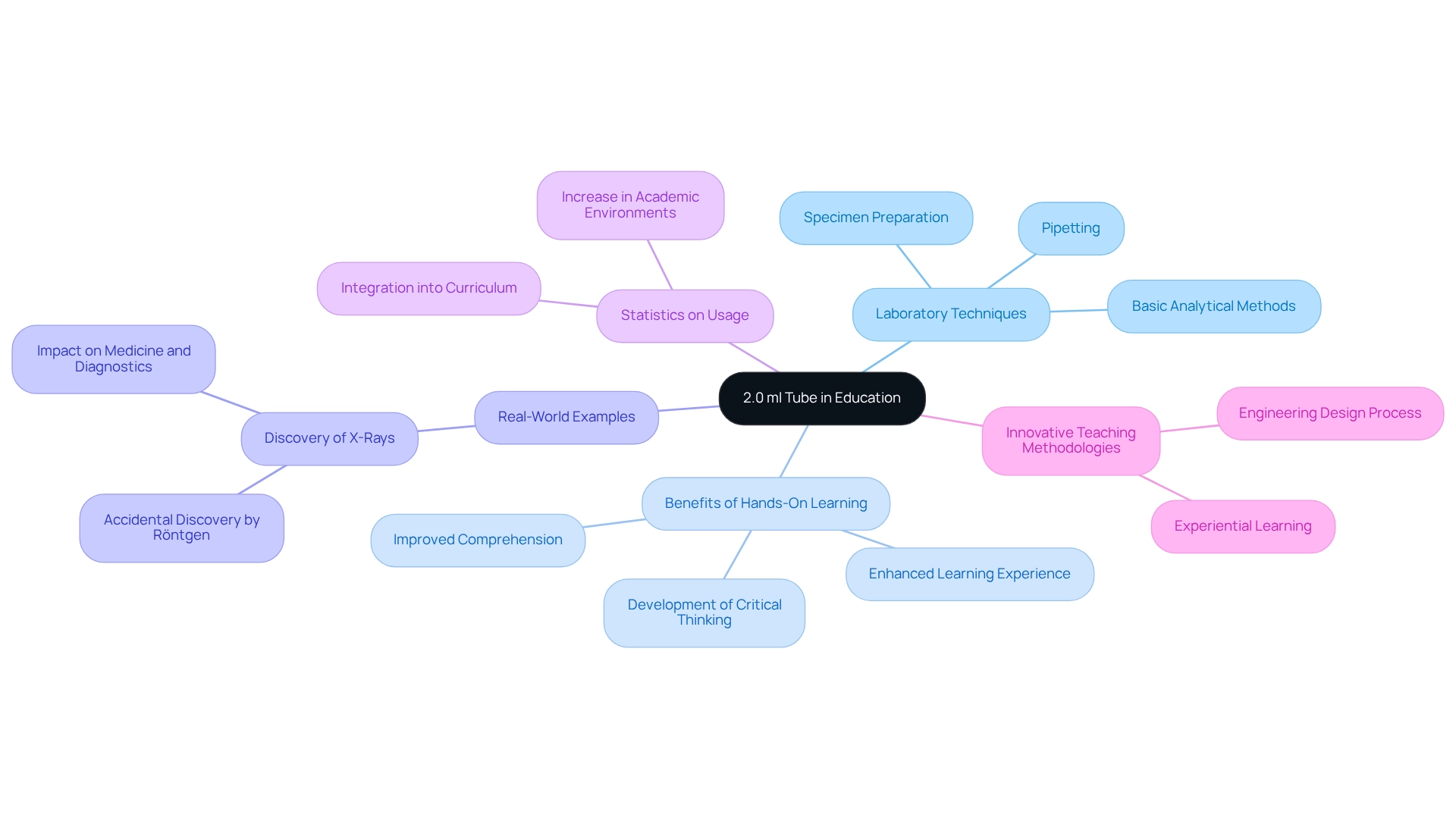
Conclusion
The 2.0 ml tube is an indispensable tool in laboratory settings, facilitating a wide range of applications from sample storage to diagnostic testing. Its compact design and high-quality polypropylene construction ensure that samples remain uncontaminated and intact, which is crucial for accurate analysis and research outcomes. Furthermore, the tube's ability to endure various environmental conditions makes it ideal for transporting sensitive biological specimens while maintaining sample integrity.
In contexts such as PCR amplification, environmental testing, and educational settings, the 2.0 ml tube proves essential. Its compatibility with diverse laboratory equipment enhances experimental efficiency and accuracy, particularly in HPLC applications and chemical reactions. Additionally, the effective sealing mechanism protects samples from contamination, reinforcing the importance of reliability in laboratory processes.
Ultimately, the significance of the 2.0 ml tube transcends mere functionality; it represents a commitment to advancing laboratory practices across multiple scientific disciplines. As laboratories continue to evolve, adopting standardized protocols for the use of these tubes can lead to improved consistency and reliability in experimental results. Embracing the advantages of the 2.0 ml tube not only streamlines laboratory workflows but also contributes to the broader mission of enhancing research quality and healthcare outcomes.




